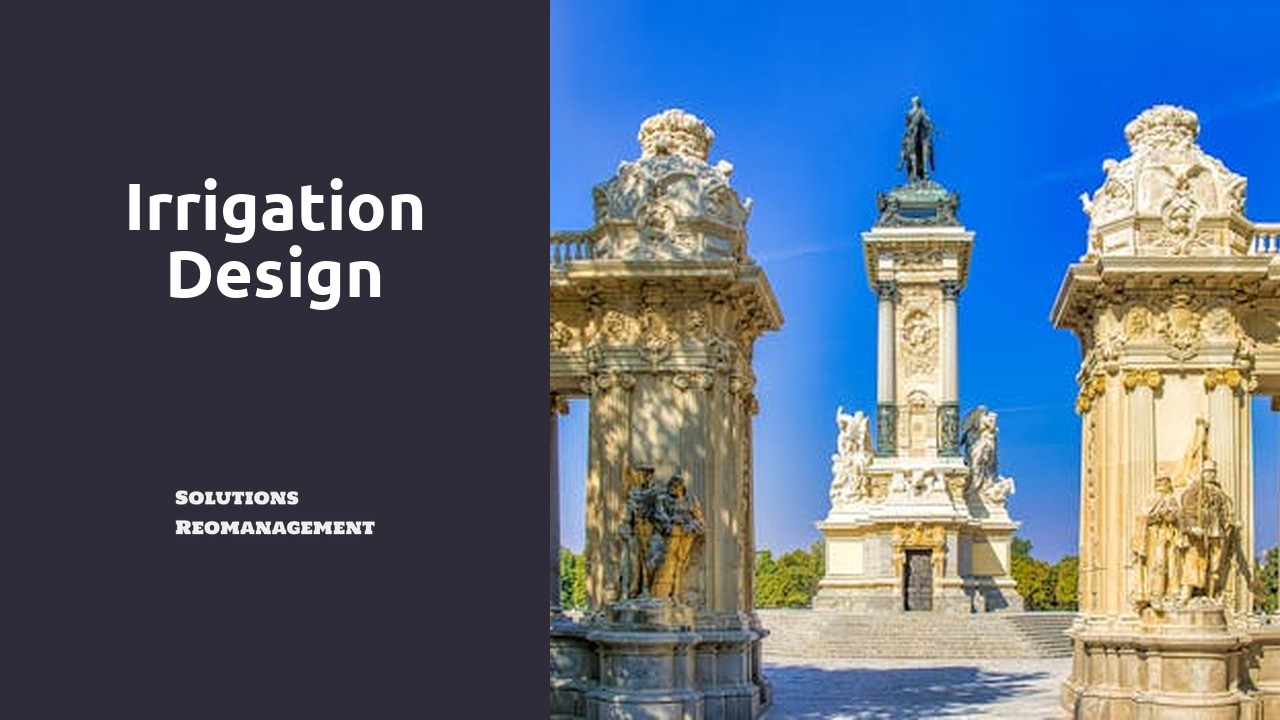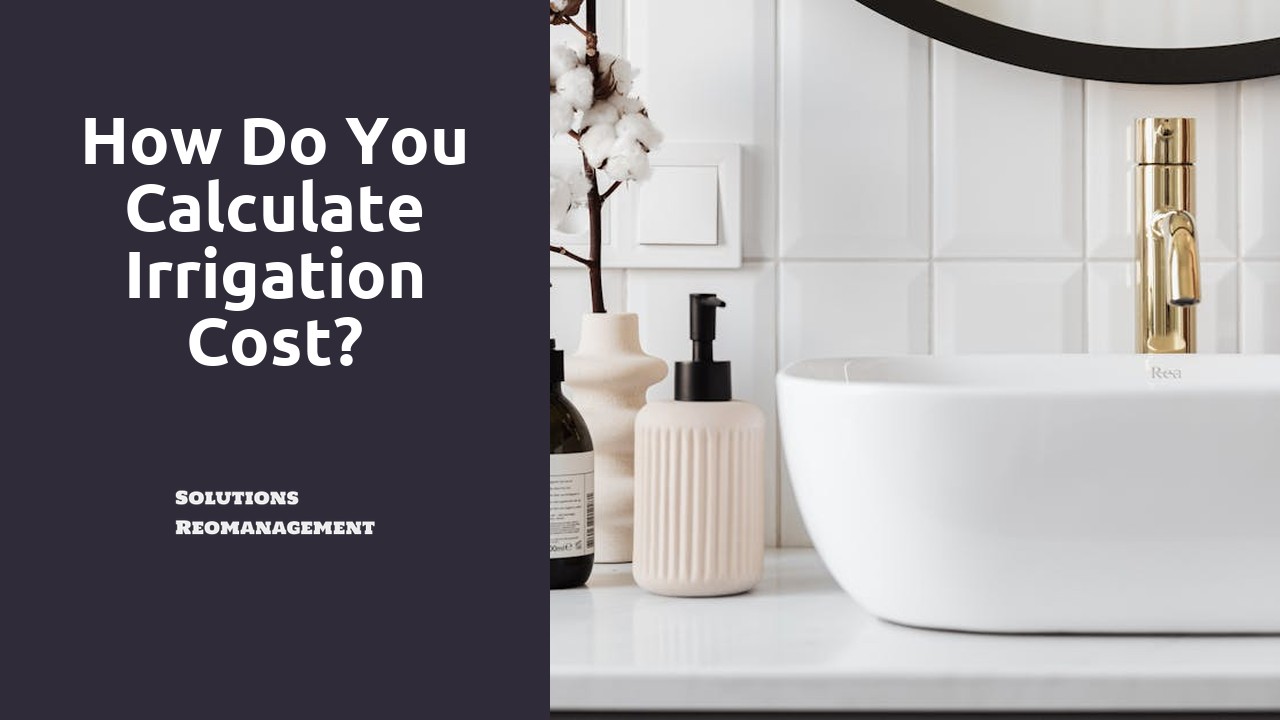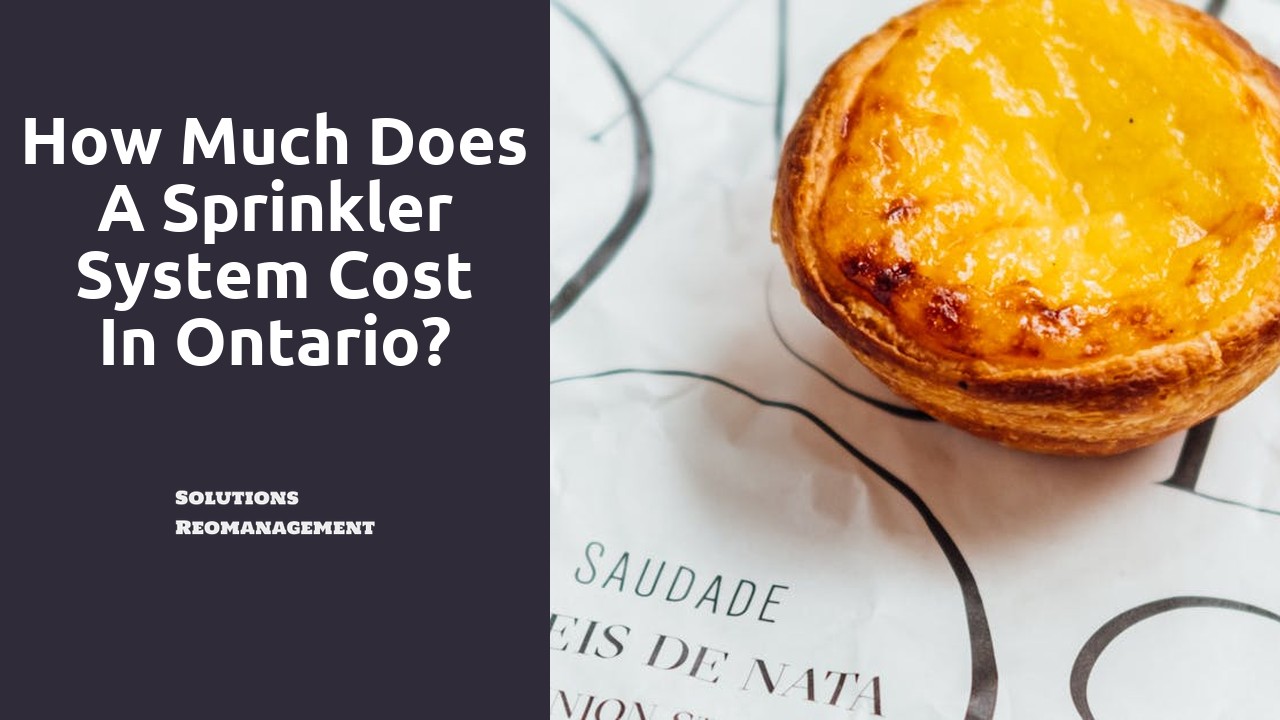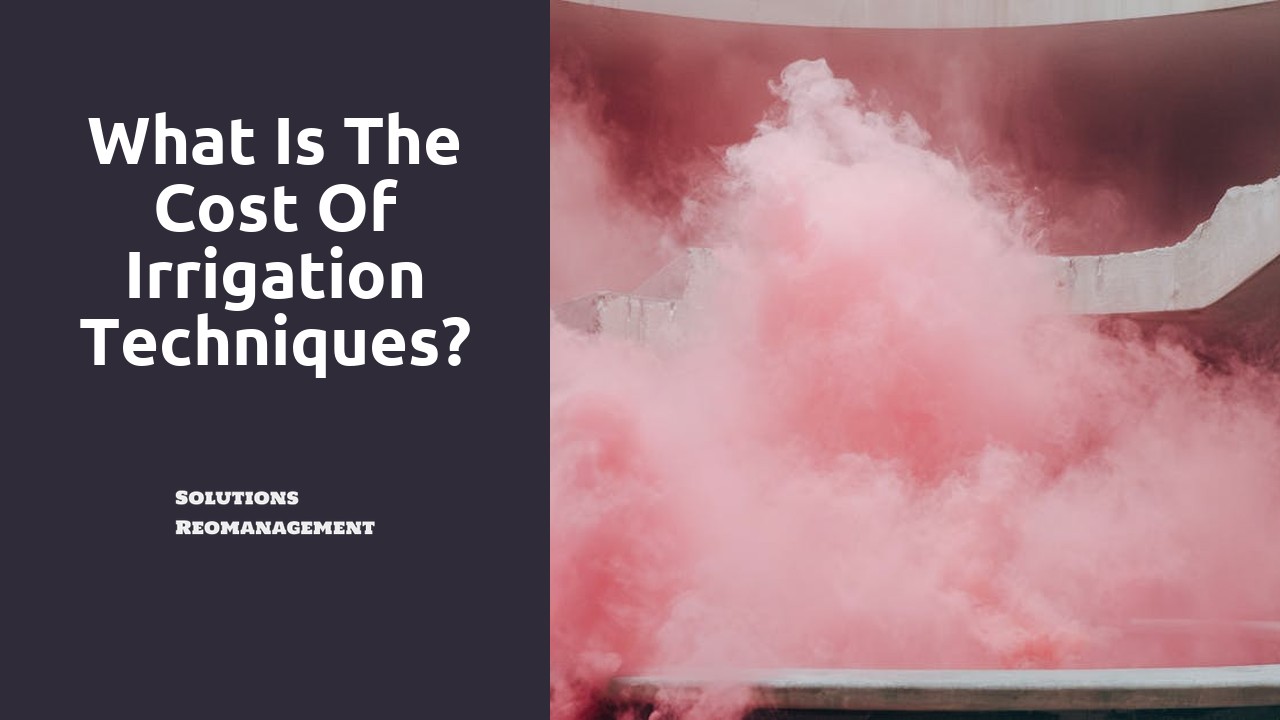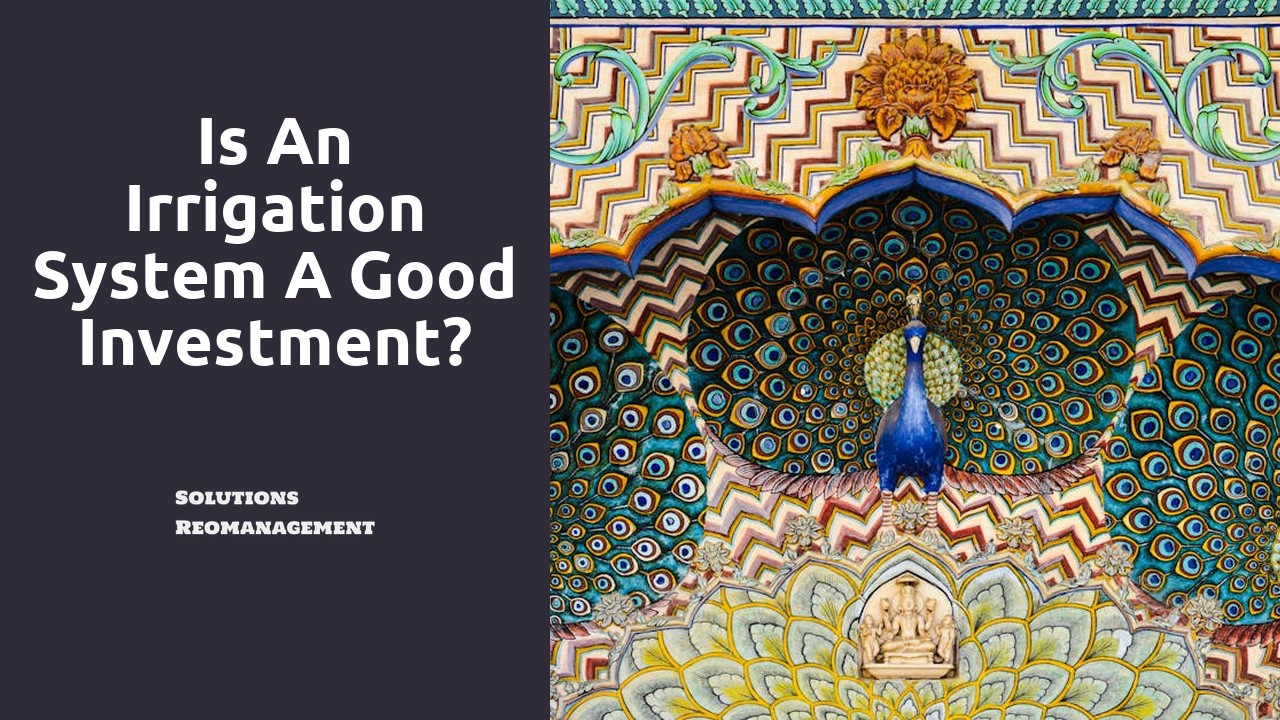
Table Of Contents
Return on Investment for Sprinkler Irrigation
Return on Investment for sprinkler irrigation is a crucial aspect for farmers looking to make informed decisions about their irrigation systems. When considering the upfront costs of installing sprinkler irrigation systems, it is essential to weigh the long-term benefits they offer. Farmers in Quinte West have seen substantial returns on their investment through increased crop yields and improved operational efficiency. The initial investment in sprinkler irrigation may seem high, but the potential gains in crop productivity and water conservation can result in significant financial returns over time.
Irrigation design in Quinte West plays a pivotal role in determining the return on investment for sprinkler systems. Efficiently designed irrigation systems can maximize water distribution, reducing water wastage and energy consumption. The advancements in technology have allowed for more precise and automated irrigation methods, leading to improved crop health and higher yield potentials. By investing in well-designed sprinkler irrigation systems, farmers in Quinte West can optimize their operations, enhance crop quality, and ultimately achieve a positive return on their initial investment.
Increased Crop Yields and Profitability
To optimize agricultural outputs, farmers in Georgina are increasingly turning to efficient irrigation systems. Irrigation Design in Georgina plays a pivotal role in enhancing crop yields and boosting profitability. By implementing efficient sprinkler irrigation systems, farmers ensure that their crops receive an adequate and consistent water supply, leading to healthier plants and increased yields. This directly translates into higher profits for farmers, as they are able to produce more high-quality crops for market sale.
Furthermore, the improved water distribution facilitated by sprinkler irrigation in Irrigation Design in Georgina also contributes to better overall plant health. Maintaining optimal soil moisture levels through precise water delivery minimizes instances of under-watering or over-watering, reducing the risk of crop diseases and other stress factors. Ultimately, by investing in sprinkler irrigation systems, farmers in Georgina are not only increasing their crop yields but also creating a more sustainable and profitable farming operation.
Hidden Costs of Sprinkler Irrigation
When considering the costs associated with sprinkler irrigation, it is essential to factor in the expenditure related to energy consumption and water usage. The operation of sprinkler systems relies heavily on electricity or fuel to power pumps and other components, leading to increased utility bills. Additionally, the amount of water required for effective irrigation can be substantial, especially in regions with arid climates or limited water resources, which can further contribute to the overall expenses.
Understanding and optimizing the design of irrigation systems can help mitigate some of these hidden costs. In Irrigation Design in Halton Hills, for example, incorporating efficient layout and technology can lead to better water distribution, reducing waste and lowering operational expenses. By employing strategies to minimize energy consumption and maximize water efficiency, farmers can better manage the hidden costs associated with sprinkler irrigation while maintaining sustainable agricultural practices.
Energy Consumption and Water Usage
When evaluating the efficiency of sprinkler irrigation systems, it is essential to consider the energy consumption and water usage involved in their operation. Irrigation Design in Georgetown plays a crucial role in determining the amount of energy required to power the system and the volume of water needed for effective irrigation. The type of sprinkler heads, their distribution throughout the field, and the pressure of the water all contribute to the overall energy consumption of the system. Additionally, the frequency and duration of irrigation cycles directly impact the amount of water used, highlighting the importance of optimizing these factors to minimize waste and costs.
Efficient water management is a key aspect of sustainable agriculture, and sprinkler irrigation systems offer versatility in controlling water distribution. However, improper design or maintenance can lead to excessive water usage and potential water wastage. It is essential for farmers to regularly inspect their systems for leaks, malfunctions, or inefficiencies that may be contributing to unnecessary water consumption. By staying vigilant and ensuring that their irrigation systems are operating at peak performance, farmers can not only conserve water but also reduce their overall operational costs.
Government Incentives for Sprinkler Irrigation
Government incentives play a significant role in promoting the adoption of sprinkler irrigation systems, particularly for agricultural purposes. In Canada, farmers implementing efficient irrigation practices can benefit from various rebates and subsidies provided by governmental initiatives. These incentives aim to support the transition towards water-saving technologies such as sprinkler irrigation, which can enhance overall water management strategies and sustainability in agriculture. For instance, in Belleville, Ontario, farmers looking to improve their Irrigation Design in Belleville might find opportunities to offset some of the initial costs through government rebates and financial support mechanisms.
Furthermore, these incentives not only help in reducing the financial burden associated with implementing sprinkler irrigation systems but also contribute to environmental conservation efforts. By encouraging the adoption of water-efficient irrigation methods, government programs aim to reduce water wastage, enhance crop productivity, and mitigate the impact of climate change on agricultural practices. Through these supportive measures, farmers can make significant strides towards sustainable farming practices while ensuring long-term benefits for both their operations and the environment.
Rebates and Subsidies Available
For farmers looking to invest in sprinkler irrigation systems in Georgetown, there are various rebates and subsidies available to help alleviate some of the initial costs. These incentives aim to promote water-efficient irrigation practices and support farmers in adopting modern irrigation technologies that can enhance crop yields and sustainability. By taking advantage of these financial assistance programs, farmers can make significant savings on the overall expenses associated with acquiring and installing sprinkler irrigation systems for their agricultural operations.
One such initiative is the Irrigation Design in Georgetown Rebate Program, which offers financial incentives to farmers who adopt water-saving irrigation technologies and practices. Through this program, eligible farmers can receive rebates on the costs related to designing and implementing efficient sprinkler irrigation systems. By participating in rebate programs like the Irrigation Design in Georgetown, farmers can not only reduce their upfront expenditures on irrigation infrastructure but also contribute to water conservation efforts in the region.
FAQS
Is sprinkler irrigation cost-effective in the long run?
Yes, sprinkler irrigation can be cost-effective in the long run due to increased crop yields and reduced labor costs.
What are the hidden costs associated with sprinkler irrigation?
Hidden costs of sprinkler irrigation may include energy consumption and maintenance costs for the system.
Are there any government incentives available for investing in sprinkler irrigation?
Yes, there are government incentives such as rebates and subsidies available to encourage farmers to adopt sprinkler irrigation systems.
Will sprinkler irrigation help increase crop yields and profitability?
Yes, sprinkler irrigation has been shown to increase crop yields and profitability due to more efficient water distribution and reduced water wastage.
How can I calculate the return on investment for installing a sprinkler irrigation system?
The return on investment for sprinkler irrigation can be calculated by considering factors such as increased crop yields, reduced labor costs, and potential government incentives.
